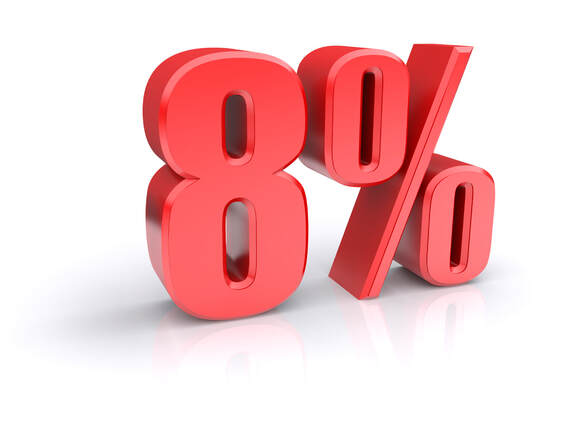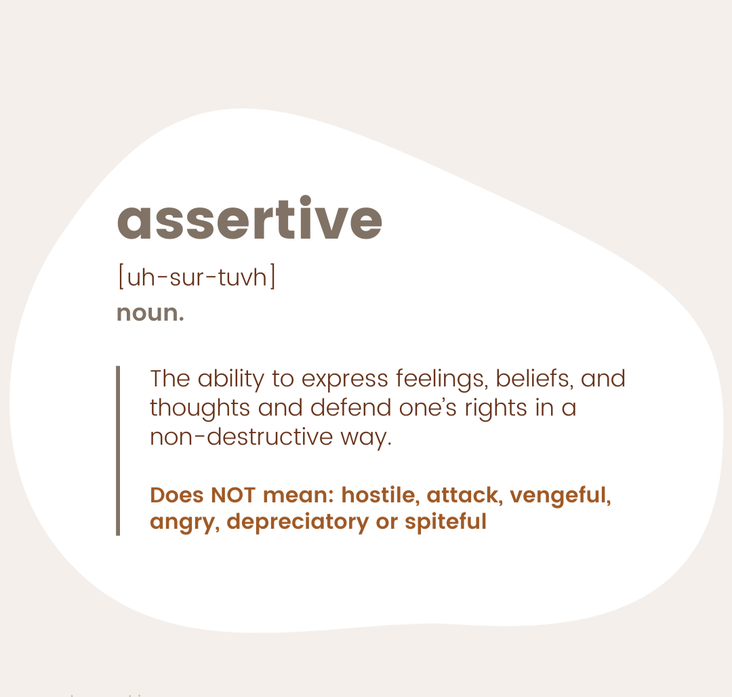|
In my 1ST 2024 blog, I proclaimed my New Year Ins & Outs Of 2024
January I delved deeper into my 1ST; Assertive Communication & Passive Aggression March we focused on my 2ND; In: Digital Detox and Out: Screen Overload May flowers brought my 3RD: In Eco-conscious Living and Out: Single-Use Plastics My birthMONTH is bringing one of the most important ones yet.. EmpowHERing Friendships. As we step into the new year.. can I even say that during the 7th month of the year? ..there's a profound opportunity to reflect on our relationships and the connections that shape our lives. Let's make a conscious effort to cherish and cultivate empowering friendships—those bonds that inspire, support and uplift us through life's journey. Join us as we discover ways to explore the importance of empowering friendships and foster deeper, more meaningful connections. Understanding Empowering Friendships: Empowering friendships are built on mutual respect, support, and trust. These are the relationships that celebrate each other's success, encourage personal growth, and provide a safe space for vulnerability. Unlike superficial or toxic connections, empowering friendships boost our well-being, contribute to our overall happiness and enrich our lives. In a healthy empowered relationship you can disagree, have space and not be offended. These REAL relationships are enduring and are not predicated on always 'drinking the koolaid.' Authenticity and Vulnerability One of the cornerstones of empowering friendships is authenticity. In 2024, let's commit to being our true selves with our friends, embracing honesty and vulnerability. By sharing our dreams, fears, and struggles, we create deeper bonds and foster an environment where our friends feel comfortable doing the same. Celebrating Differences Empowering friendships celebrate and embrace differences. Whether it's diverse backgrounds, unique interests or varying perspectives, these differences broaden our horizons and enrich our lives. Let's appreciate and learn from the diversity within our friendships, recognizing that our friends' unique qualities contribute to the richness of our relationships. Mutual Support and Encouragement Empowering friendships thrive on encouragement and mutual support. This year, make it a priority to be a source of positivity and strength for your friends. Celebrate their achievements, offer a listening ear during tough times, and provide constructive feedback when needed. Remember, true friends lift each other up and help each other reach their full potential. Open Communication Effective communication is key to any successful relationship, and friendships are no exception. This year, practice honest and open communication with your friends. Address conflicts head-on, be willing to listen without judgement and express your feelings clearly. By fostering open dialogue, you can build a foundation of respect and trust and resolve misunderstandings. Quality Time and Shared Experiences In our fast-paced, digitally-driven world, it's easy to lose sight of the importance of quality time with friends. Let's prioritize spending meaningful moments with those who matter most. Plan activities that you both enjoy, whether it's a cozy night in with heartfelt conversations, a hike in nature or a weekend getaway. Shared experiences create lasting memories and strengthen the bonds of friendship. Setting Healthy Boundaries Man. I sound like a broken record here.. HEALTHY BOUNDARIES. Empowering friendships also involve respecting and setting healthy boundaries. Communicate and understand your limits, and be mindful of your friends' boundaries as well. By doing so, you create a balanced and respectful dynamic that allows for individual growth and mutual support. As we embark on the 7th month of the current year, (since I can't really say the new year..,) let's make a conscious effort to cherish and nurture empowering friendships. By celebrating differences, embracing authenticity, mutual support, open communication, quality time, and setting healthy boundaries, we can cultivate relationships that inspire and uplift us. ..and in today's world we NEED That. Here's to deeper connections, stronger bonds, and the transformative power of empowering friendships. May your life be filled with cherished memories and meaningful moments with the friends who make our lives brighter!
0 Comments
First and foremost.. This is NOT A Political blog. I love my career and sanity too much to do that.
Secondly.. This is NOT A F!ck the Patriarch blog. I love gentlemen, notice I didn’t say men, and I believe we all need each other to cohesively achieve our goals and live our best lives ever. What THIS Is.. Is a letter To All My Lady Boss Mom’s Out There.. Validation that you ARE Heard and you are seen and you have permission to say “NOT Fucking today. I’m taking time for myself.” Dear Lady Boss Mom, You may feel the pressure to be the hardest worker in the room due to a combination of desire to prove yourself in a traditionally male-dominated space, personal drive, and societal expectations, however, it shouldn’t come at the cost of your emotional health. Despite progress in gender equality, workplace bias still exists. Women, especially those in leadership positions, may feel the need to work harder to overcome biases and stereotypes that portray them as less committed or competent than men. They often are held to different standards than their male counterparts and face higher scrutiny. There's a persistent societal expectation for women to excel in both their personal and professional lives, often juggling multiple roles simultaneously. As a result, this pressure to prove themselves capable and deserving of their roles can drive lady boss mothers to outperform their peers and strive for perfection and they may feel compelled to work harder to prove their competence and dedication. Dr. Emily Weis accurately shares, “There is so much pressure on women to be everything, all the time. We are compared to our male counterparts constantly, and while we may be giving 150%, often only are recognized for 75%. There is an inappropriate drive to close the gap by appearing to be a hard worker when we are already there!” Many lady boss mothers are driven by their ambition and desire for professional success. They may have worked hard to achieve their positions and are determined to maintain their credibility and status. This intrinsic motivation can lead them to push themselves harder and take on more responsibilities, even at the expense of their well-being. Another business-owning mother anonymously shared, “I hold myself to an impossibly high standard - one that I would never expect anyone else to rise to. Because of that, I feel like I need to work twice as hard as everyone else so that no one else will see me fail I’ve had a lot of people doubt me and speak poorly about me as I’ve tried to grow my business and get out of my comfort zone, so I think I also put that pressure on myself because I don’t want them to be right.” In many cultures, there's a deeply ingrained belief that women should prioritize their caregiving responsibilities and family over their careers. This can create pressure for lady boss mothers to overcompensate by demonstrating their ability to balance both spheres effectively and their commitment to their work. Abby Scott nailed it when she said; “I think it’s multifaceted, there is more than one answer.. I think some of what makes us Lady Boss’ is ego and success-driven. We couldn’t do what we do and do it well if we didn’t believe we could do it. So sometimes it makes it difficult for us to delegate and relinquish control. Maybe we are so driven because we all feel like we are fighting for a smaller percentage of seats at the table.” Michelle Mottshaw added; ".. as women, we've always been EXPECTED to perform. Clean, kids, laundry, parents, pets, work, etc. We are the doers, and most of us do it well.. Thus, Lady Boss' always feeling that competitive drive to get it done! It's hard to shut off." Lady boss mothers may feel responsible for setting an example for other women, particularly their daughters, by demonstrating determination, perseverance, and resilience in the face of challenges. They want to show that women can thrive in leadership roles and succeed in any environment, regardless of the obstacles they may encounter. While the dedication and hard work of lady boss mothers are admirable, it's essential to recognize the importance of balance and self-care. Overexerting oneself and striving for perfection can lead to burnout and negatively impact personal and professional well-being. Encouraging a culture of flexibility, support, and understanding in the workplace can help alleviate some of the pressure faced by lady boss mothers and enable them to thrive in their roles while maintaining a healthy work-life balance. So.. HOW Do we change it? We start a movement. No bra burning, please! That sounds like a waste of money and an increase in our carbon footprint. Let’s start a movement that normalizes canceling appointments and the prioritization of mental health over overbooking. This is crucial for fostering a culture of self-care and well-being. Self-care is Non-Negotiable! Just as we prioritize our physical health, mental health should be treated with the same level of importance. Canceling appointments or taking breaks when needed is a form of self-care that allows you to address your mental well-being and recharge. Lead by example by prioritizing your mental health and modeling healthy behavior, you can inspire others to do the same. This ripple effect contributes to a positive cultural shift towards prioritizing well-being in all aspects of life. Constantly pushing oneself beyond limits and overbooking can lead to burnout, which has serious consequences for both mental and physical health. By recognizing the signs of burnout and taking proactive steps to prevent it, you can maintain your overall well-being and productivity in the long run. Promote open communication by normalizing the practice of canceling appointments for mental health reasons and encouraging open communication about mental health struggles. It fosters a supportive environment and reduces stigma where everyone feels comfortable expressing their needs and seeking help when necessary. BOUNDARIES. I will continue to scream this from the rooftops. Canceling appointments for mental health reasons is a recognition of one’s limitations and an assertion of boundaries. It sends a message that it's okay to say no and prioritize personal well-being over external obligations. Ultimately, honoring one's mental health needs is an act of self-preservation and self-respect. It's important to remember that canceling appointments or taking breaks when needed is not a sign of weakness but rather a proactive step towards maintaining overall health and happiness. Treat yourself like the Boss YOU Are. Sincerely, Another Lady Boss Mom That Just Looks Like She Has Her Shit Together P.S. Interested in joining other like-minded Lady Boss’? Contact me for an invite to our upcoming EmpowHER Group. It's hard to believe that a year has passed since I penned my thoughts on self-love during February, National Heart Month. As I sit down to reflect on the journey of the past year, I'm filled with gratitude for the growth experienced and the lessons learned.
In that blog post, I spoke passionately about the importance of self-love, emphasizing that it doesn't require validation from external sources such a designated month on the calendar or as a sweetheart. I shared my own journey of overcoming childhood trauma and toxic relationships to finally arrive at a place of self-acceptance and empowerment. One year later, I stand by every word written. Self-love remains not just a concept, but a daily practice—a journey of self-care and self-discovery that evolves with each passing day. As I look back, I realize that the journey of self-love is not linear. It's filled with moments of clarity and moments of doubt and peaks and valleys. But through it all, the commitment to oneself remains unwavering. Setting healthy boundaries continues to be paramount in my journey of self-love. I've come to realize that boundaries are not walls; they're bridges that allow for authentic connection while preserving one's well-being. Communicating my needs, honoring my own worth, and saying "no" when necessary have become non-negotiables. Cutting toxic relationships out of my life was a difficult but necessary step in reclaiming my power. It meant letting go of people who devauled my worth, drained my energy, and hindered my growth. In doing so, I created space for positive, uplifting connections that align with my aspirations and values. Self-confidence remains the cornerstone of my journey. Every day, I affirm my worth, reminding myself that I am deserving of abundance, joy, love, and that I am enough. Practicing gratitude has become a daily ritual, anchoring me in the present moment and fostering a sense of appreciation and contentment for life's blessings. As I reflect on the past year, I'm reminded of the resilience of the human spirit and the transformative power of self-love. It's not always easy, but it's always worth it. To anyone embarking on their own journey of self-love, I offer this advice: be patient with yourself, trust the process, and above all, love yourself fiercely. And to those who joined me in the 14 Day Self-Love Challenge, I hope it served as a catalyst for positive change and self-discovery. Remember, the journey of self-love is ongoing—a beautiful unfolding of the heart, mind, and soul. As we celebrate National Heart Month once again, let us not only cherish the love we share with others but also nurture the most important relationship of all—the one we have with ourselves. For in loving ourselves, we discover the true essence of fulfillment, inner peace, and joy. Here's to another year of growth, self-discovery, and unapologetic self-love. Gratitude & Love, Ajia Studies and surveys have suggested that a significant number of people tend to abandon their New Year's resolutions relatively early in the year.
What's early in the year? According to Strava, a social fitness network, early is the year is on the 12TH Of January when most people are likely to give up on their resolutions. The University of Scranton in 2014, found that about 8% of people actually achieve their New Year's resolutions. These statistics highlight the difficulty many individuals face in maintaining their resolutions throughout the year. Individual experiences may vary, and the success of New Year's resolutions depends on various factors, including the individual's commitment, nature of the resolution and support system. So how can a health coach help? A health coach and personal trainer can play crucial roles in helping individuals stay committed and supported in their health and fitness journey. Here are some ways they can contribute to your success:
By combining expertise, guidance, and personalized support, health coaches and personal trainers can significantly enhance your chances of staying committed to and successful in achieving your health and fitness goals. If you find yourself struggling I'm more than happy to chat with you and help you find someone - even if it's not me! Everyone deserves a support system to achieve self-empowerment. Empowering Connections: The Transformative Force of Assertive Communication in the New Year1/7/2024 In my previous blog, I proclaimed my New Year Ins & Outs Of 2024.
My 1ST In is Assertive Communication and my 1ST Out is Passive Aggression. In a world where effective dialogue is the cornerstone of meaningful connections, cultivating assertiveness can be a game-changer. And now that my sister has finally, after 7 days, stopped laughing at my 1ST Out, allow me to delve into the essence of assertive communication, bidding farewell to passive patterns and unlocking the potential for more authentic, empowered relationships in the coming year. Assertive Communication Unveiled: Assertive communication represents a departure from aggressive confrontation and passive silence. It is an approach that seeks to express one's feelings, needs, and thoughts with clarity and respect. Unlike aggressive communication, which creates conflict, and passive communication, which suppresses individuality, assertiveness is a delicate balance that builds bridges rather than walls. Building Bridges, Not Barriers: The power of assertive communication lies in its ability to construct bridges between individuals. No longer do we need to navigate the destructive impact of aggressive communication or yield to the pitfalls of passive silence. In 2024, let's embark on a journey of building bridges—bridges that foster respect, trust, and understanding. Constructive Conflict Resolution: Avoiding difficult conversations can lead to lingering resentment and unresolved conflicts. Assertive communication, on the other hand, encourages the direct addressing of issues, paving the way for constructive conflict resolution. Let's embrace assertiveness as the catalyst for collaborative problem-solving, empathy, and understanding. Empowering Personal Boundaries: One of the hallmarks of assertiveness is its capacity to empower personal boundaries. In the new year, bid farewell to the days of overlooking your own needs and yielding to unreasonable requests. Assertive communication enables the articulation of clear, well-defined boundaries that serve as the foundation for healthier, more sustainable relationships. As we step into the uncharted territory of 2024, let assertive communication be our guiding light. Out with aggressive clashes and passive patterns and in with the empowerment that comes from expressing ourselves with clarity, confidence, and respect. May assertive communication be the transformative force that propels us toward a year filled with growth, meaningful relationships, and understanding, and may the new year bring forth a wave of more authentic, empowered connections. Here's to a year of empowered dialogue and the strengthening of our interpersonal bonds! As the countdown to midnight begins, we bid farewell to the old and welcome the new with open arms. While I've always personally been triggered by New Year's resolutions, society demands that the New Year not only marks a change in the calendar but also brings a wave of fresh opportunities, perspective, and trends. Speaking of trends, The 'Ins & Outs' Trend is one I can get down with. Here are mine.. and I'd LOVE To hear yours..
In: Assertive Communication Out: Passive Aggression Say goodbye to passive-aggressive exchanges and say hello to assertive communication. In 2024, fostering healthy relationships involves expressing boundaries, needs and thoughts honestly and openly. This shift towards assertiveness contributes to the development of respectful, strong connections, promotes understanding and reduces misunderstandings. In: Digital Detox Out: Screen Overload In the age of constant connectivity, 2024 signals a growing movement towards reclaiming our analog lives. The digital detox trend is gaining momentum, urging individuals to embrace moments of genuine human connection, step back from the screens and unplug. Say goodbye to screen overload and say hello to a more balanced and mindful approach to technology. In: Eco-conscious Living Out: Single-Use Plastics 2024 marks a turning point in the fight against environmental degradation. Say farewell to single-use plastics as eco-conscious living takes center stage. Embracing reducing waste, reusable alternatives, and supporting sustainable practices become the norm. It's a collective effort towards a greener, more sustainable future. In: Empowering Friendships Out: Energy-Draining Relationships The new year invites us to reassess our social circles and bid farewell to energy-draining relationships. Instead, focus on cultivating empowering friendships that contribute positively to your life, inspire and uplift. Surround yourself with individuals who celebrate your success and encourage your growth. As we step into 2024, let's embrace the "Ins and Outs" with a sense of adaptability and curiosity. Whether it's adoption of assertive communication, focus on digital detox, or whatever you choose, the new year offers a canvas for positive change. Here's to navigating the exciting journey ahead and making the most of the opportunities that 2024 has in store. Cheers to a year of growth, meaningful connections, and resilience! During the period between Christmas, (OK Perhaps it started before Christmas,) and New Year's, it's common for people to indulge in festive foods and take a break from their regular routines. We're all guilty, Here's some advice I'll be practicing while I preach to you for maintaining a balance between enjoying the holiday season and taking care of your well-being:
Need help focusing on making positive choices and setting achievable health goals? DM Me. I'm accepting TWO New clients in February and ONE in March. For the 8TH Consecutive year I've had the pleasure of adopting someone, or someones for Christmas. It's a tradition that my family, and many of my friends and clients participate in. Expressing gratitude through this act of kindness is a heartwarming and meaningful way to spread joy during the holiday season.
You're MORE Than welcome to join our Elf gang, OR, you can start your own elf gang. Other than glitter, Mariah Carey on repeat, and tinsel, here's a guide on how you can start this:
A long time client of mine and I have a running inside joke that I hand out mini Dole Salads to Trick Or Treaters. I'm not that mean. I just leave my light off instead. All joking aside, offering healthy Halloween candy alternatives can be a fun way to promote a more balanced and nutritious approach to this holiday. Here are some creative alternatives to traditional Halloween candies:
Dried Fruit Or Raisins: Dried fruit or raisins can be a chewy and sweet option that's healthier than candy. Mini Dark Chocolate Bars: Instead of milk chocolate, provide mini dark chocolate bars with a high cocoa content. Dark chocolate contains antioxidants and is lower in sugar Pretzels: Mini bags of whole-grain pretzels or pretzel sticks can be a salty alternative to sweets. Popcorn: Hand out individual bags of lightly seasoned or plain air-popped popcorn. It's a whole-grain snack that can be a hit with kids Glow Bracelets Or Sticks: Give out glow bracelets or sticks, which can add a fun and safety element to Halloween night. Mini Toys, Stickers, Temporary Tattoos: Instead of edible treats, consider giving out non-food items like Halloween-themed mini toys, stickers, or temporary tattoos. Kids often enjoy these just as much as candy.. Remember to be mindful of any allergies your trick-or-treaters might have and provide alternative options accordingly. While it's perfectly fine to have some traditional Halloween candies available, offering a mix of healthier alternatives can help kids and parents make better choices during this sweet-filled holiday Happy & Safe Halloween from our Home to yours! As I sit down to write this blog post..OK OK I'll be honest I'm standing at my kitchen island jamming out to 90' Music. Regardless of my music choices, I can't help but feel an overwhelming sense of gratitude and pride. Thirteen years ago, I embarked on a journey that would forever change my life – I became my own lady boss. Today, as I reflect on these incredible 13 years, I want to share the highs, the lows, and the invaluable lessons in between that I've learned along the way.
The Beginnings Back in 2010, I chose to walk about from a sexiest and toxic work environment and I took a leap of faith and decided to turn my passion for fitness and well-being into a profession. Little did I know that this decision would lead me on a path filled with challenges, personal growth and triumphs. Becoming a Virtual Health Coach and Personal Trainer was not just about a career change; it was a transformation of my identity. It was empowering. The Highs One of the most rewarding aspects of being my own lady boss has been the ability to witness the positive impact I've had on people's lives. Helping clients achieve their fitness goals, lead healthier lives and overcome obstacles has been a constant source of inspiration. The recognition I received in 2021 as the Best Female Personal Trainer and Best Virtual Personal Trainer in Rochester, NY, was not just an award; it was a validation of the hard work and dedication I put into my craft. The daily sense of empowerment is unmatched. The Lows How could their be lows to being your own Lady Boss? Well.. the joke is when you own your own business you get to choose what 8, 12, 16 hours a day you work. Want to take tomorrow off? What other days will you have to over book yourself? In all honestly the hardest, the lowest part, is when you care more about a client then they care about themselves. My passion, while being one of my greatest attributes, is also my biggest flaw. I care deeply and passionately and when I have a client that doesn't see their potential it scars me for a long after they have fallen off my schedule. Embracing Adventure We all know I love a good adventure. Life is an adventure, and I've always been an adventurer at heart. Traveling and experiencing the world, and pushing my boundaries have been essential to my personal growth. These adventures have not only broadened my horizons but have also enriched my ability to connect with people from all walks of life. Military Life and Family As a military wife and mom, I've learned the true meaning of adaptability and resilience. Balancing the demands of my career with the challenges and joys of military life has been an incredible journey. My family's unwavering support has been my anchor in the storm, and I couldn't be more grateful. Passions Beyond Fitness While my profession is a significant part of my life, I've always believed in the importance of balance. Outside of work, I've embraced the world of equestrian sports and competed fiercely, and found solace in the companionship of my dogs and horses. These passions have not only enriched my life but also shaped my character. As I celebrate 13 lucky years of being my own lady boss, I want to express my gratitude to all those who have been part of this journey. To my family, friends and clients, your belief in me and support have been my driving force. To anyone considering taking a leap of faith into entrepreneurship, I encourage you to celebrate the victories, embrace the challenges, and stay true to your passion. The road may be winding, but it's the journey that truly matters. Here's to the next 13 years of growth, learning, and making a positive impact on the world. Thank you for being part of my incredible journey. Cheers to the lady boss, (or just plain BOSS,) within all of us! |
AuthorAjia Clancy coaches YOU to self empowerment while helping you navigate life towards your health & wellness goals. Archives
July 2024
Categories
All
|
Proudly powered by Weebly











 RSS Feed
RSS Feed